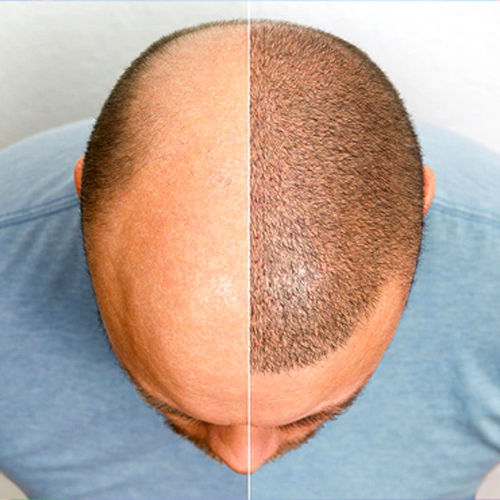Hair loss can be a challenging experience, affecting self-confidence and overall well-being. For those seeking a more permanent solution to hair loss, hair transplant surgery offers a viable option. This procedure involves moving hair follicles from one part of the body (typically the back or sides of the scalp) to areas experiencing thinning or baldness. In this blog post, we'll delve into the details of hair transplant surgery, including the types of procedures, the process, and what to expect before and after the surgery.
Types of Hair Transplant Surgery
There are two primary methods of hair transplant surgery:
1. Follicular Unit Transplantation (FUT)
- Procedure: In FUT, a strip of scalp is removed from the donor area, usually the back of the head. This strip is then divided into smaller grafts containing one to four hair follicles each. The surgeon creates tiny incisions in the recipient area and implants the grafts.
- Advantages: FUT can transplant a large number of grafts in a single session, making it suitable for extensive hair loss.
- Disadvantages: This method leaves a linear scar in the donor area, which can be noticeable if the hair is worn short.
2. Follicular Unit Extraction (FUE)
- Procedure: In FUE, individual hair follicles are extracted directly from the donor area using a small punch tool. These follicles are then implanted into the thinning or balding areas.
- Advantages: FUE leaves minimal scarring, making it a preferred option for those who wear their hair short. It also has a faster recovery time compared to FUT.
- Disadvantages: FUE can be more time-consuming, and typically fewer grafts can be transplanted in a single session compared to FUT.
The Hair Transplant Process
1. Initial Consultation
- The first step is a consultation with a qualified hair transplant surgeon. During this visit, the surgeon will assess your hair loss, discuss your goals, and determine whether you are a good candidate for the procedure.
2. Pre-Surgery Preparation
- Your surgeon will provide specific instructions to follow before the surgery. This may include avoiding certain medications, refraining from smoking, and arranging for someone to drive you home after the procedure.
3. The Surgery
- Hair transplant surgery is typically performed under local anesthesia. The surgeon will begin by harvesting the hair follicles from the donor area using either the FUT or FUE method. Once the grafts are prepared, the surgeon will create tiny incisions in the recipient area and implant the follicles.
4. Post-Surgery Care
- After the surgery, you will receive instructions on how to care for your scalp and the transplanted hair. This may include keeping the area clean, avoiding strenuous activities, and taking prescribed medications to prevent infection and reduce swelling.
5. Recovery and Results
- The recovery period varies depending on the individual and the method used. Most patients can return to work within a few days to a week. It is normal for the transplanted hair to fall out within the first few weeks; new hair growth will typically start within a few months, with full results visible after 9 to 12 months.
Benefits of Hair Transplant Surgery
- Natural-Looking Results: When performed by an experienced surgeon, hair transplant surgery can provide natural-looking results that blend seamlessly with your existing hair.
- Permanent Solution: Unlike temporary solutions such as wigs or topical treatments, hair transplant surgery offers a permanent solution to hair loss.
- Boost in Confidence: Restoring a fuller head of hair can significantly improve self-esteem and confidence.
Considerations and Risks
While hair transplant surgery can be highly effective, it is important to consider the potential risks and drawbacks:
- Scarring: Both FUT and FUE methods can result in scarring, though FUE scars are typically less noticeable.
- Cost: Hair transplant surgery can be expensive, and the cost varies based on the extent of the procedure and the surgeon's expertise.
- Multiple Sessions: Depending on the degree of hair loss, multiple sessions may be required to achieve the desired results.
- Risk of Complications: As with any surgical procedure, there are risks of complications such as infection, bleeding, and poor graft survival.


